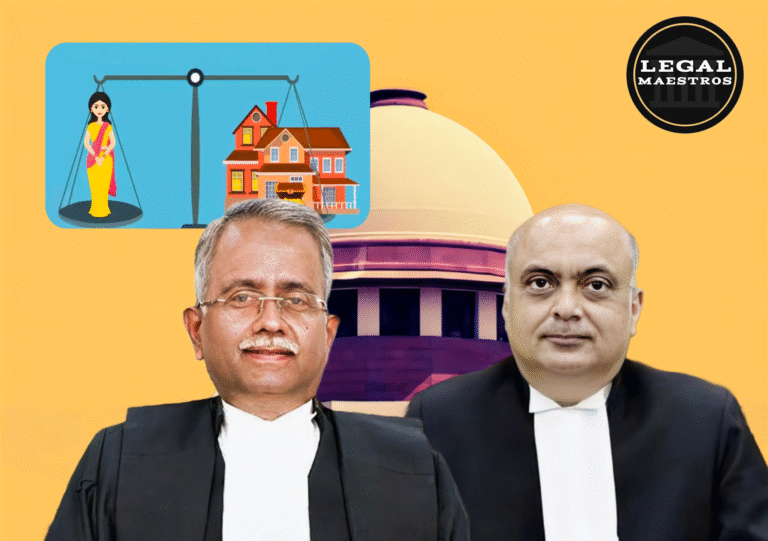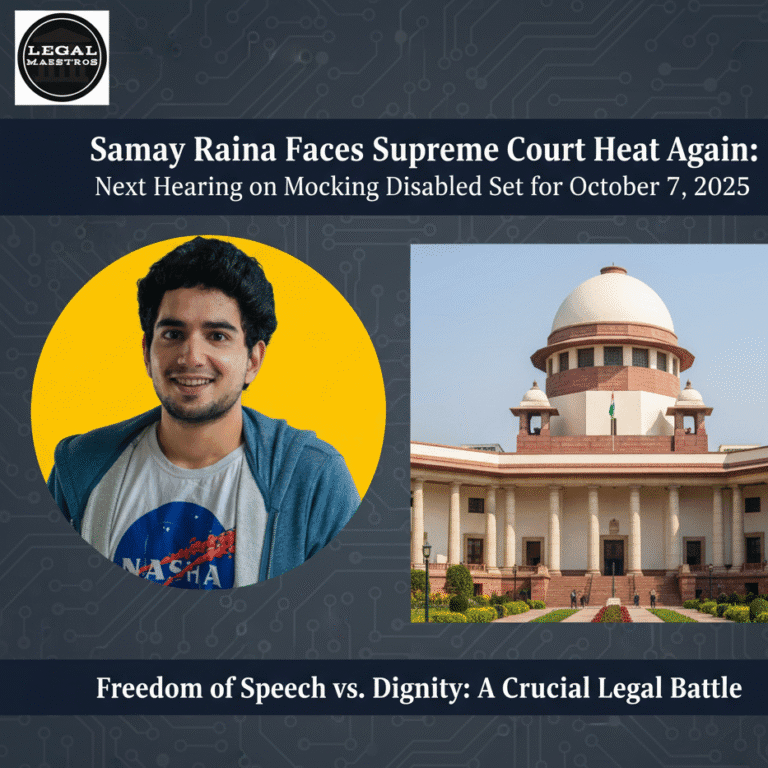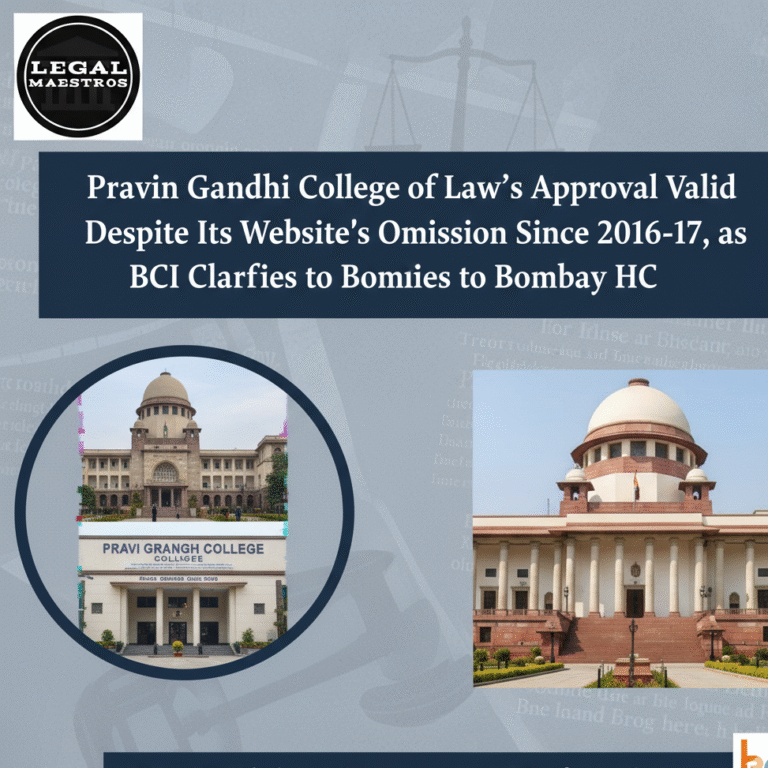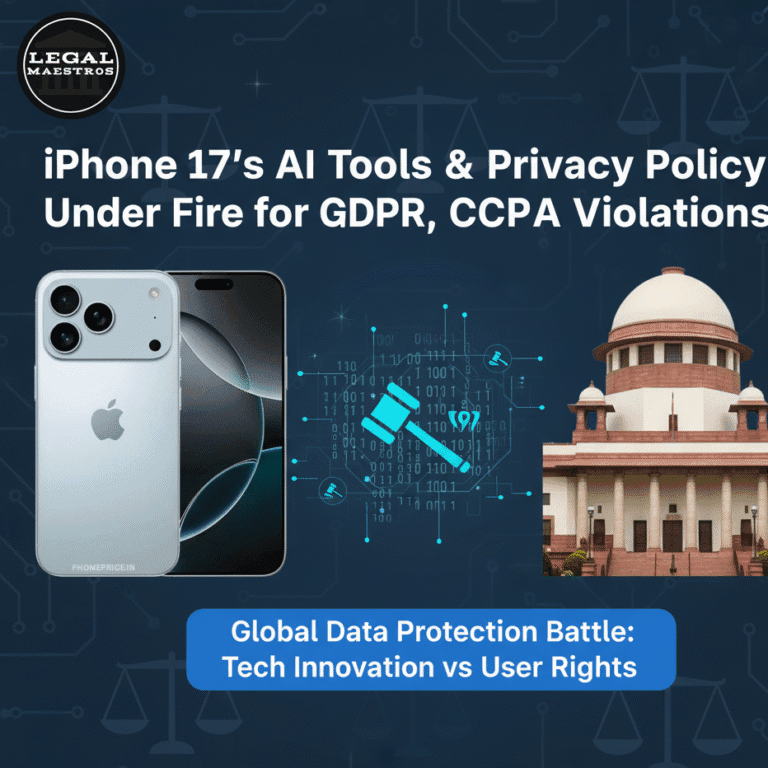
Justice Vikram Nath
Introduction
The Supreme Court of India issued an important verdict on May 29, 2025, in the matter of Crl. Appeal Nos. 2880–2881 of 2025. This ruling affected a considerable amount of people.
This verdict was the outcome of Special Leave Petitions that were filed against the orders of the Calcutta High Court that granted bail to persons who were suspected of being involved in election-related violence and were being tried by the Central Bureau of Investigation.
A panel consisting of two judges, led by Justice Vikram Nath, took the decision to revoke the bail that had been granted previously.
This decision was taken in response to the horrifying allegations of communal attack, rape, and atrocities that were committed on May 2, 2021, in a hamlet located in the state of West Bengal. We came to this conclusion in order to protect the credibility of the proceedings and to keep the peace in the public discourse.
Facts of the Case
It was in May of 2021, just after the results of the Assembly election in West Bengal were published, that the problem first began to become apparent. It was said that on May 2, 2021, a large group of armed assailants, driven by political and sectarian enmity, assaulted the house of the plaintiff, who was a Hindu peasant residing in Gumsima Village.
The plaintiff was a victim of the attack. An attempt was made by the mob to have the complainant’s wife disrobed and sexually abused. In addition, members of the family were assaulted, the house was wrecked, and other items were stolen.
In light of the fact that the local police initially declined to file a First Information Report (FIR), the complainant was compelled to seek the assistance of the Calcutta High Court.
The Central Bureau of inquiry (CBI) was given an order by the High Court in August of 2021 to undertake an inquiry into the incidence of murder and crimes against women that were the consequence of post-election violence.
The instruction was issued when the High Court issued the directive. After conducting this investigation, a First Information Report (FIR) was submitted on December 16, 2021, with the number RC0562021S0051. This was the final outcome of the inquiry.
Legal Provisions Considered
As the major focus of its study, the Supreme Court looked at a variety of criminal laws that restrict unlawful assembly, assault, rape, and caste abuse. These laws were one of the key areas of consideration.
The charges that were included in the First Information Report (FIR) were in accordance with the Indian Penal Code, specifically Sections 143 (unlawful assembly), 144 (assembly with intent to commit an offence), 147–149 (rioting and related acts), 326 (voluntarily causing grievous hurt), 354 (assault or criminal force to woman with intent to outrage her modesty), 376D (gang rape), 427 (mischief causing damage), and 450 (house-trespass), read in conjunction with Sections 511 (attempt) and 34 (common intention).
In addition, the lawsuit drew reference to the Scheduled Castes and Scheduled Tribes (Prevention of crimes) Act, which was enacted in order to draw attention to the intricate nexus that exists between political violence and targeted crimes.
Contentions of the CBI
In accordance with the statements made by the Additional Solicitor General on behalf of the Central Bureau of Investigation (CBI), the bail that was granted by the High Court did not take into consideration the seriousness of the allegations and the true threat that the accused presented to the judicial process.
The agency made note of the fact that the FIR registration had been delayed as a result of involvement by the local police, and that the accused continued to make use of their political position in order to intimidate witnesses and avoid accepting responsibility for their conduct.
The Central Bureau of Investigation (CBI) issued a warning that permitting the accused to remain on bail would increase the likelihood of future tampering with evidence, would put the public’s trust in law enforcement at risk, and would constitute a violation of the rule of law.
Arguments of the Respondents
However, the counsel for the accused respondents noted that the High Court had carefully studied the factual matrix and uncovered no special evidence that connected the appellants to the most horrible atrocities that were purported to have happened.
Both the delayed First Information Report (FIR) and the statements submitted by witnesses did not offer sufficient evidence to support the claim that they were engaged in any kind of violence or sexual assault, as they underlined.
They contended that it was appropriate to release some individuals on bond, and that any longer detention would be futile and unjust. This was in light of the fact that there was no direct evidence against certain individuals.
Fundamental Issues for Determination
Specifically, the Supreme Court distilled the appeals into two key questions: first, whether the nature and gravity of the alleged offenses—particularly politically motivated communal violence and attempted sexual assault—justified cancellation of bail; and second, whether the accused posed a real risk of absconding, tampering with witnesses, or otherwise obstructing a fair trial. Both of these questions were addressed in the appeals. It was essential that both of these issues be answered in the appeals.
The rights of the accused, as described in the Code of Criminal Procedure, and the obligation of the state to ensure that justice is administered in a way that is both free and fearless needed to be brought into harmony. It was necessary to find a middle ground between the two.
Court’s Analysis
When conducting its analysis, the Court confirmed the rules that have been established: bail and its cancellation require separate criteria, and the only grounds that necessitate interfering with a bail order are strong grounds, such as that there was fraud in the process of obtaining release, that there was a danger to public order, or that there was the possibility of trial obstruction.
The bench came to the conclusion that there was clear prima facie evidence of an illegal assembly that assaulted the complainant’s residence with explosives, sticks, knives, and weapons in order to terrify political opponents.
This conclusion was reached after the bench carefully examined the First Information Report (FIR) and the charge sheet of the Central Bureau of Investigation (CBI). A blatant assault on the basic values of public decency and democratic standards was carried out by the mob via the systematic violence that they perpetrated, which included the attempted disrobing and harassment of the complainant’s wife.
Based on the findings of the Court, it was determined that there was a potential for interference in the trial to occur due to the political influence of the respondents and the prior obstruction by the local authorities.
Decision and Directions
The Supreme Court allowed the appeals and terminated the bail because it came to the conclusion that the bail that had been granted by the Calcutta High Court had been obtained on “extraneous considerations” and that the prolonged freedom of the respondents posed a danger to both the integrity of the trial and the public order.
As a result, the bail was terminated. On the other hand, it issued an order that the accused must surrender within two weeks or else they would be subject to the prospect of coercive measures.
A directive was issued to the trial court, instructing it to expedite the procedures, to make every effort to conclude the trial within a period of six months, and to ensure that the complainant and important witnesses are provided with unrestricted security. The West Bengal Home Secretary and the Director General of Police were appointed to serve as supervisors for the trial.
Implications of the Ruling
The commitment of the court system to put a stop to violence that is committed for political or communal purposes is shown by this historic judgment, which illustrates the determination of the system.
The Supreme Court made it quite clear that no individual, regardless of the political power they possess, is authorized to obstruct the administration of justice by denying bail in a case that involves a tragedy that affects a large number of people.
This decision improves the jurisprudence of Section 437(3) and 482 of the Criminal Procedure Code, with a focus on the prevention of witness tampering and the preservation of trial fairness. The opinion also supports the jurisprudence of bail cancellation.
According to the ruling, any effort to disrupt the democratic process by means of terror related to elections would be subject to the strictest scrutiny and fast response from the justice. This is further emphasized by the fact that the verdict was handed down.
Conclusion
A strong application of criminal procedural safeguards was shown by the Supreme Court’s decision in the case of the Central Bureau of Investigation (CBI) vs. Sekh Jamir Hossain and others.
This decision was given in order to preserve public order and defend the rights of victims. The reasoning of Justice Vikram Nath sheds light on the dynamic relationship that exists between the independence of the individual and the protection of the society in situations when illegal acts pose a danger to the basic underpinnings of democracy.
This decision will serve as an important precedent for future cases involving mass attacks on the judicial system because it places an emphasis on the role of the courts to ensure that bail does not become a cover for those who are powerful to subvert justice.
For any queries or to publish an article or post on our platform, please email us at contact@legalmaestros.com.








